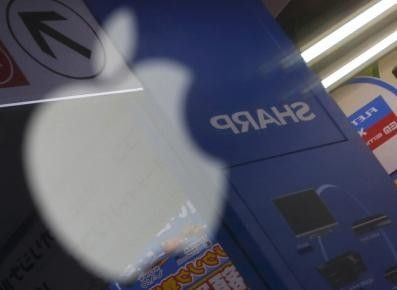iPhone 5c Moving to Bigger iPhones: Why Apple 'Cautious' About iPhone Sizes Change

Apple has started a varied lineup of iPads and iPods in many sizes at the start of the year with one form factor - the iPhone.
The birth of iPhone 5c came out like an experiment that brought Apple to develop an operational sophistication required to manufacture many iPhone sizes. Daniel Eran Dilger of Apple Insider analyzed the significance of iPhone 5c in Apple's future decisions.
With iPod model in 2001, which costs $400, and iPad in 2010 priced at $500, Apple expanded its offerings for iPods from $50 iPod to $400 64 GB iPod touch and the iPad from $300 to iPad mini and to the pricey $929 128 GB iPad Air.
But for iPhones, Apple moved on selling a single model which starts and ends basically with similar prices. Other phone manufacturers offered from very cheap to very costly phones, small to large, in a diverse way and in an array of different forms and colors.
In June 2010, when iPhone 4 was released, its maker struggled to finetune its production of the planned white variant until April 2011. This highlighted the complexity of product development and challenges in operations involved in managing devices on iPhone's scale.
In 2012, Apple put its strategy to test by launching multiple colors of iPod touch. In 2013, Apple sold around 26 million iPods, only half of which were iPod touch models, which meant the iPod Touch color experiment entangled management around 13 million devices. On the contrary, iPhones sales reached 150 million, which can be the reason Cupertino is taking cautious steps to release three colors for iPhone 5s.
While only producing limited color variant for iPhone 5s, it is still a progression of the company's 2012 iPod Touch multiple color strategy. But Apple broadened its color experiment on the cheaper, refresh iPhone 5c, which comes in five colors.
As the biggest volume maker of premium smartphones, the introduction of many iPhone 5c colors was actually Apple's significant challenge, which it knew would comprise a small percentage of the total iPhone sales for fiscal 2014.
While critics labeled the 5c a flop, it was a product of repetitive experiment which helped the Cupertino phone maker perfect its operational large scale production of many iPhone models. Apple's learning from iPhone 5c was applied to all sorts of product variation and this included parallel production of many iPhone sizes.
The difference between Apple and the other phone makers is the former earns more profits. One of the factors of which it does not use much of its employees to design, experiment, market and sell many product portfolio at very thin margins.
While other phone makers discontinued some operations after losing millions of dollars, the Cupertino firm continues to protect its profitability to prevent employee layoffs and financial losses. It is not a surprise the Cupertino titan refuses to heed some financial analysts dictations on its business decisions.
Apple continues marketing affordable luxury, selling exclusively premium mobile devices at prices over $400. Then how would Apple fare in the bigger screen phone trend pioneered by Samsung and Motorola?
The tech industry has to wait for Apple's moves, including the release of its new products, and wait more for the sales figures. The next segment will somewhat check out the trend of new phone sizes, which is laid by iPhone 5c's groundwork in moving Apple into a direct race with its rivals and will indeed have historical importance.




















